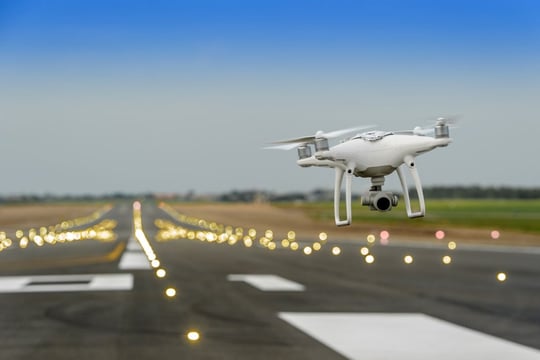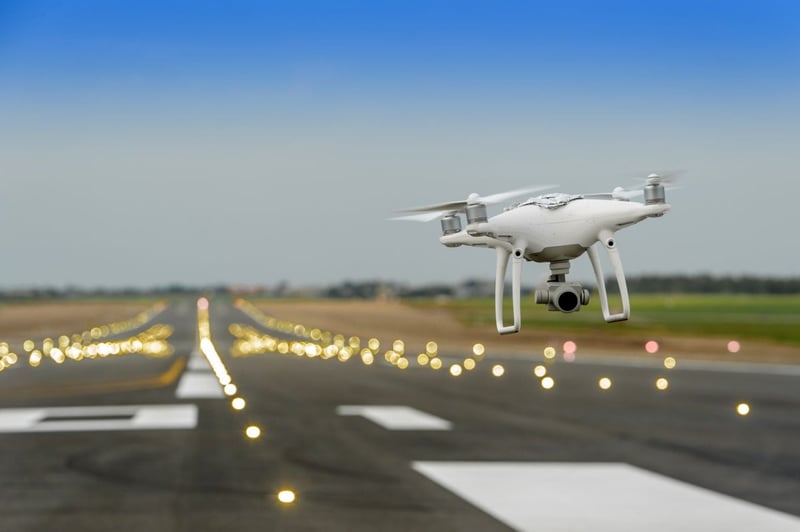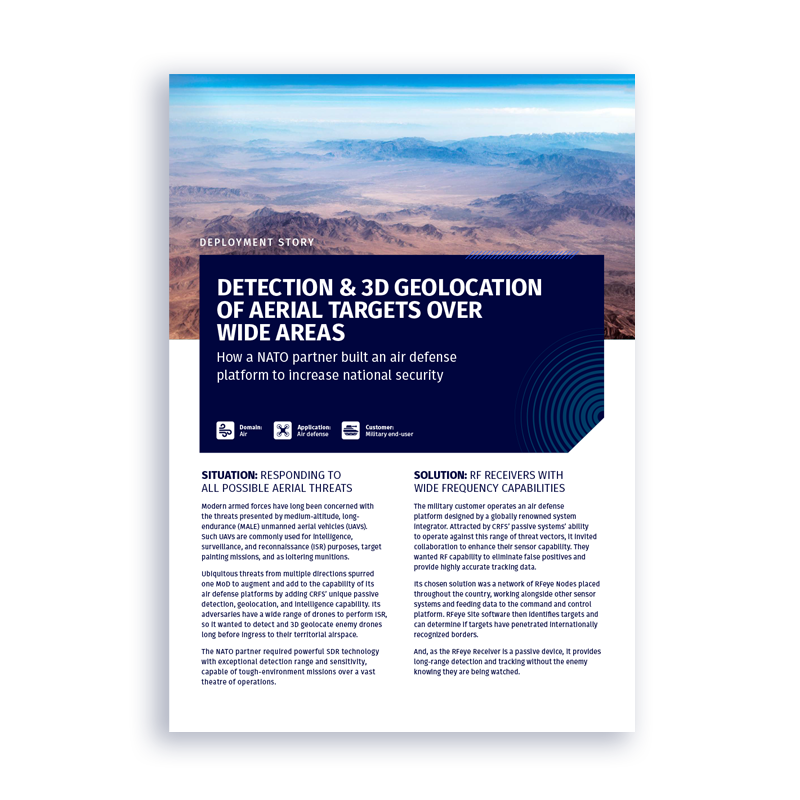
In a rapidly emerging field like drone detection, it can be difficult to separate fact from fiction. At CRFS, we’ve got years of experience designing and deploying drone detection and geolocation systems, so we thought we’d do our bit by collecting some of the myths and misconceptions that we’ve come across, and trying to clear them up in this blog.
1) All you need for drone detection is a radar
Radar systems can be a useful element in a drone detection solution, especially at airports where the systems are already installed, but they aren’t a complete solution for a number of reasons. Firstly, radar systems require a direct line of sight to objects they are monitoring. When tracking aircraft, this is rarely an issue because aircraft fly high enough to sit above any potential ground clutter. Drones, by contrast, are frequently operated at very low altitudes, which means that objects such as buildings and trees can prevent radar systems from detecting them. RF signals, on the other hand, are able to pass through or around these objects, allowing drones to be detected even when in the shadow of a building.
Secondly, drones are usually physically much smaller than aircraft, which gives them a correspondingly smaller radar cross section. This cross section is almost identical to that of birds, so some radar systems can struggle to differentiate between drones and birds, resulting in a high false-positive rate for drone detection. RF systems, on the other hand, only detect systems that emit RF signals, and are therefore able to ignore any birds that might be present.
2) Destroying the drone means problem solved
So you’ve detected and geolocated a drone then neutralized it using a jammer, laser or spear. The problem is, neutralizing the drone is only really half of the battle. With drones becoming cheaper and easier to access, a determined operator who is intent on causing trouble will likely return soon with a new system. If you really want to solve the problem for good, you’ll need to locate and detain the operator. As we’ve already seen, radar systems can’t help here – a user located on the ground will be impossible to pick up on radar. With an RF system, though, you can locate the operator exactly the same way you locate the drone: by detecting the RF transmissions they send.
3) All you need is a good signal library
One approach to drone detection and geolocation using passive RF is to focus on building a library of drone signals. Systems that rely on these libraries first analyze control signals used by major drone manufacturers, then determine the distinctive features of these signals, and finally look for signals with those distinct features, often using cheap, low-fidelity receivers.
But a good signal library is not enough to create a successful drone detection system, for two main reasons. Firstly, the library can only be used when signals have actually been detected, which means the quality of the receiver is as important as the quality of the library. RFeye Nodes’ market-leading low noise figure means signals can be detected that would otherwise be lost in the noise. Secondly, drones used for malicious or illegal purposes will likely be homemade or hand-modified, so they won’t match existing signal libraries. RFeye doesn’t just look for library signals – it looks at all RF transmissions and flags any suspicious signals that might be coming from custom drones.
4) RF detection can be avoided by pre-programming routes
While it is technically true that an RF system alone cannot detect a drone operating silently with a pre-programmed flight path, using a drone in this manner removes one of its key strengths—the ability to provide video footage. This has real consequences for hostile actors as well as hobbyists. For instance, even operators with malicious intent may rely on video for real-time control and feedback as well as surveillance. Pre-programming also removes a drone’s ability to change plans or evade capture if it is spotted, so it can compromise its home location or rendezvous point by proceeding there even while being observed.
In reality, most drone sightings in restricted areas are likely to be hobbyists accidentally straying into the wrong area, all of whom will use RF to control a drone. However, when threats from self-sacrificial drones are valid, we recommend supplementing RFeye Drone with electro-optical (EO) and radar systems where applicable.
5) One DF array can locate a drone
DF (direction finding) or AoA (angle of arrival) techniques work by determining the direction from which a signal is received, to work out a bearing from the receiver to the target. A single DF array can only give the bearing – it can’t provide any information on how far away the drone is. And for most drone defeat devices, that is not enough information to allow the drone to be disabled. A minimum of two DF arrays is therefore needed if you want to determine the location of an RF emitter – it will be located at the point where the bearings from the two arrays cross. It is also imperative that these receivers are geographically separated, as the closer they are, the greater the uncertainty in the determined location. Two arrays placed close together will be unable to provide a satisfactory geolocation.

6) Lab-spec performance is achievable in the real world
Product brochures are full of impressive claims about the performance of drone detection systems: “better than 1° accuracy in direction finding,” “effectively unlimited range,” etc. Demonstration videos show drones’ positions with pinpoint accuracy. The problem is, these performance claims are based on lab results at optimum frequencies and conditions, and most videos are often either simulations (i.e., theoretical predictions or even outright falsehoods) or else live demonstrations in unrealistically low-RF environments.
So how do these systems perform in a real-world, urban environment, or at a busy commercial airport? At CRFS, we are happy to demonstrate the performance of our systems in real life, with real signals, showing results you can actually obtain in practice. After all, it’s highly unlikely that your application will involve detecting drones in an anechoic chamber.
7) Drone detection systems are the same thing as counter-drone systems
This is a terminology myth, but still an important one if you’re looking to install a counter-drone system. Essentially, a counter-drone or anti-drone system consists of two discrete parts: a drone detection system that alerts you to the presence and location of drones, and a drone defeat system that deploys some kind of countermeasure to disrupt or disable the drone following detection. The detection system might include radar, electro-optical (EO) sensors and/or RF detection, while the defeat system might use a jammer, laser, projectile or control-system override. These two parts could be integrated or could be completely separate systems, rather than one integrated unit. (In fact, integrating an RF system with a jammer without hefty protections could quickly damage receivers).
Want to find out more?
If you have any more questions about drone detection or would like to discuss CRFS’s drone detection systems, then get in touch with us here.

Deployment story
Detection & 3d geolocation of aerial targets over wide areas
How a NATO partner built an air defense platform to increase national security
